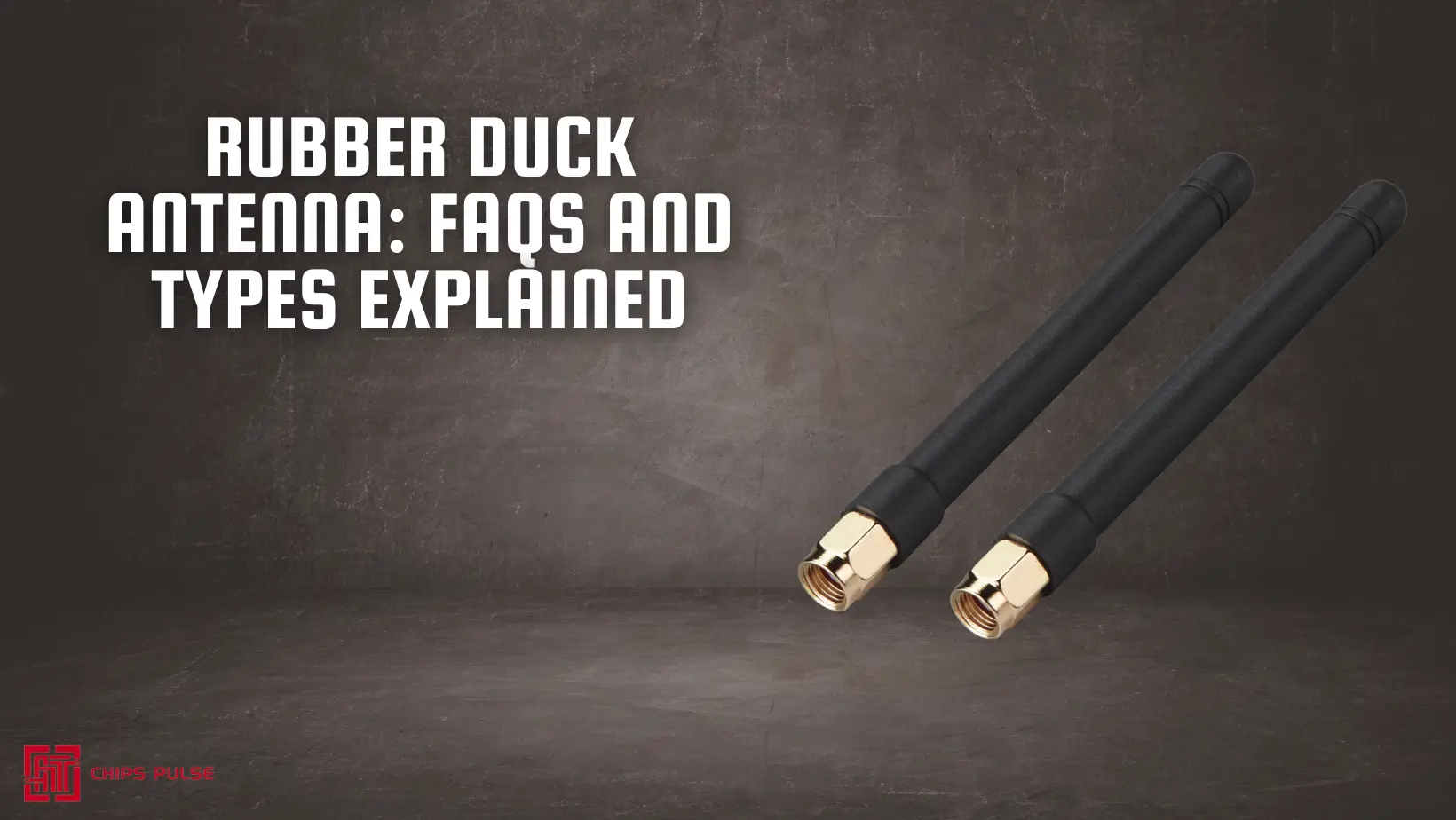A rubber duck antenna is a compact device that functions as a monopole antenna, typically utilized in portable equipment. These antennas feature a one-quarter wavelength element, making them electrically short quarter-wave antennas with a moderate capacitive reactance.
The design of rubber duck antennas allows for an imprecise impedance match, requiring the connection of the antenna in series with an inductor for optimal performance . These antennas are often preferred for their convenience and versatility, adapting well to various devices and applications.
The distinctive feature of rubber ducky antennas is their original spring antenna structure enclosed within a rubber-like covering. This protective covering provides durability and enhances the antenna's resistance to environmental factors, making it a reliable choice for portable communication setups.

When it comes to modern rubber ducky antennas, there is a wide array of materials, shapes, and sizes to choose from. Before selecting an antenna that best suits your project, it is important to consider the following types:
1. Wire-Clamp Antennas:
Wire-clamp antennas are a popular choice due to their ease of installation and versatility. These antennas typically feature a wire that can be clamped onto a device or base, making them suitable for various applications. They are commonly used in wireless communication devices such as routers, access points, and IoT devices.
2. Fixed-Position Antennas:
Fixed-position antennas are designed to be mounted in a specific orientation, providing consistent and reliable signal reception. These antennas are ideal for applications where a stable connection is crucial, such as in industrial settings or outdoor environments. They come in different shapes and sizes to cater to specific project requirements.
3. Flexible Antennas:
Flexible antennas offer versatility and durability. Their bendable design allows for easy positioning and adjustment, making them suitable for applications where space is limited or where the antenna needs to be positioned at different angles. These antennas are commonly used in handheld devices, wearable technology, and compact electronics.
In conclusion, when selecting a modern rubber ducky antenna for your project, consider the specific requirements such as installation ease, stability, versatility, and space constraints. Understanding the characteristics of wire-clamp antennas, fixed-position antennas, and flexible antennas can help you make an informed decision that aligns with your project needs.
Rubber ducky antennas are compact and versatile antenna types that are commonly used in various communication devices due to their efficiency in transmitting and receiving signals across a broad frequency range. These antennas are designed to operate on frequencies ranging from 100 MHz to 5.9 GHz, making them suitable for a wide range of applications.
One of the defining features of rubber duck antennas is their flexibility in terms of design and mounting options. Depending on the specific requirements of the application, these antennas can come with different bases such as straight, right angle, or swivel bases. Additionally, they offer a variety of connector mount options including desktop stand-alone mount, magnet mount, or bulkhead mount with a flying lead/integrated cable, allowing for easy installation and adaptability to different setups.
The straight, right angle, or swivel bases of rubber ducky antennas provide flexibility in positioning and adjusting the antenna to optimize signal reception and transmission. The connector mount options further enhance the versatility of these antennas, enabling seamless integration into a wide range of devices and systems.
Whether it's for wireless communication, networking, or other applications that require reliable signal transmission, rubber ducky antennas prove to be a popular choice due to their compact size, broad frequency range, and versatile mounting options. Their effectiveness in operating across frequencies from 100 MHz to 5.9 GHz makes them a practical and efficient solution for various communication needs.
- Appearance: The rubber duck antenna is typically short and stubby, resembling a miniature duck (hence the name). It's often used in handheld devices like walkie-talkies and portable radios.
- Flexibility: Due to its flexible nature, the rubber duck antenna is less prone to breakage, making it ideal for portable devices that may get bumped or dropped.
- Range: While the rubber duck antenna may have slightly limited range compared to longer antennas, it is sufficient for short to medium-range communications.
- Appearance: Whip antennas are usually longer and slender compared to rubber duck antennas. They are commonly seen on vehicles, base stations, and communication towers.
- Range: Whip antennas generally have a longer range and better reception capabilities, making them suitable for applications requiring extended coverage.
- Durability: While whip antennas provide superior range, they are more rigid and prone to damage if not handled carefully.
In summary, the choice between a rubber duck antenna and a whip antenna depends on factors such as the intended use, range requirements, and durability considerations. Both antennas have their strengths and are selected based on the specific needs of the communication system.